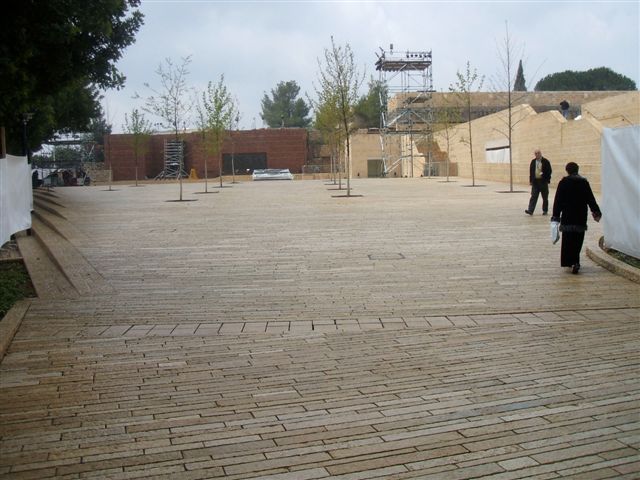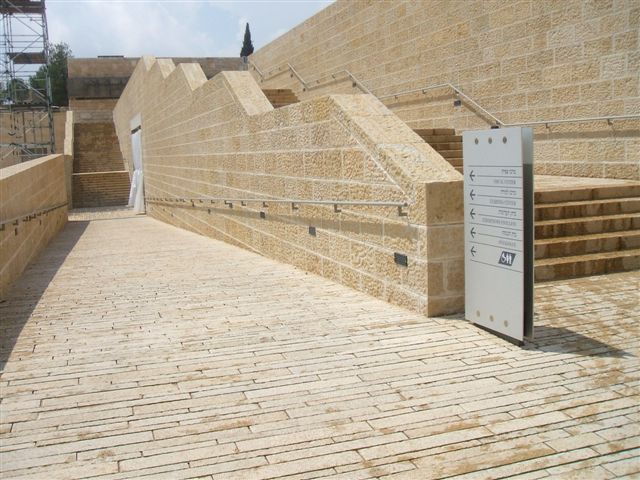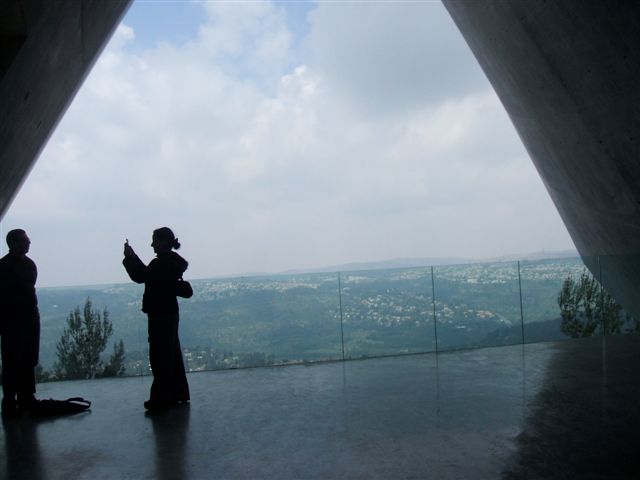Yad Vashem, the Holocaust Martyrs’ and Heroes’ Remembrance Authority was founded in 1953 according to a Knesset act. Since its formation, Yad Vashem is entrusted with documenting the history of the Jewish people during the Holocaust, perpetuating the memory and biography of each and every one of the six million victims and educating the next generations on the Holocaust using archives, the library, the school, museums and by awarding the title “Righteous Among the Nations”. At its location on Har Hazikaron Hill in Jerusalem, Yad Vashem is a web of trees and paths that lead to the museums, exhibitions, monuments and statues.
Yad Vashem is famous as one of the most important and impressive memorial sites in the world. The impression left on the visitor is so strong is can be felt in each and every part of the body.
During our evaluation of accessibility to diverse people with disabilities, we noticed the irony with so many resources now invested for improving this population’s quality of life, while back then this group of people was even denied the right to continue living for a short while to work in concentration camps. This fact illustrates the light-years distance between the cruelty of these human beasts and our efforts to allow an equal and accessible life to people with disabilities.
Our accessibility review illustrates the will of Yad Vashem staff to enable as many disabled people as possible to be full participants in the shocking experiences of the period and truly feel equal to other visitors.
Our evaluation concludes that the site has a high level of accessibility.
The disabled parking includes four spaces in the underground parking area and additional parking on the ground floor. Access to the elevator is only 20 meters away and it brings the visitor to the lobby which is 50 meters away for the elevator. The site occupied a large area with several important locations to visit.
The lobby entrance has glass walls and information counters 92 cm high. The staff is polite and helpful. A cloakroom, accessible toilets (expect proper signs and an internal and external handle on the door) and a self-service restaurant with a slightly too high payment counter are located in the basement of the lobby. Access to the basement is available using a comfortable accessible elevator.
The Holocaust History Museum – the museum is accessible with moderate slopes, convenient passages between rooms and an exit into a typical Jerusalem landscape. The museum has guided groups as well as audio guides.
The whole site lacks an electronic message board and assistive equipment for visually impaired and blind people. Most rooms have low lighting in accordance with the character of the site. On the other hand, all the equipment for the hard of hearing is available.
From the museum an accessible path leads to the Warsaw Ghetto Square where the main ceremony is held each Holocaust Memorial Day. The square can be reached using several accessible paths and disabled toilets with basic features are available, although they are not properly marked.
Nearby, an elevator or escalator leads to a larger square and to the entrance to the Hall of Remembrance.
Other sites that were found to be accessible are the Holocaust Art Museum, the Synagogue and the Archive which includes authentic, rare documents and accessible computers and desks.
The Children’s Memorial includes a circular path and is deliberately dark with railing and a moderate slope. It also includes an interactive education center, a viewing center, a pavilion for changing exhibitions and of course paths with slopes that conform to the standard.
The Valley of Communities can be reached by car and the only limitation is the gravel between community monuments which makes mobility difficult.
Throughout the museum disabled toilets can be found. They are accessible but lacking proper signs and adapted handles in the entrance door. Wheelchairs are available for visitors needing them and scooters are currently being considered.
We extend out thanks to Ms. Viviane Uriah from the Reservations and PR department, who assisted with precise information on the museum.







